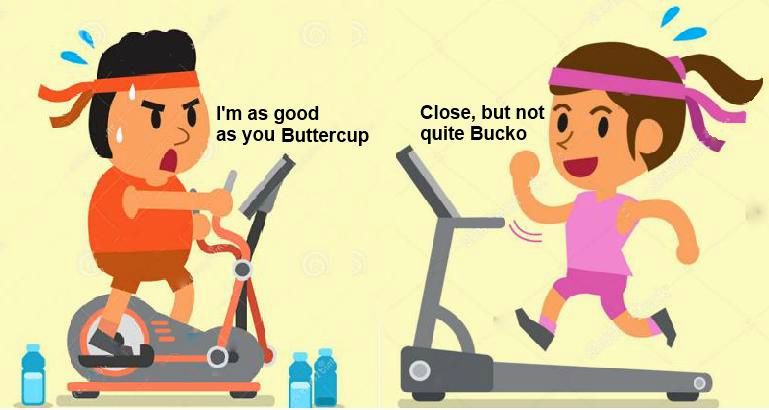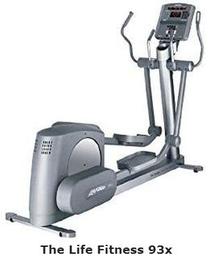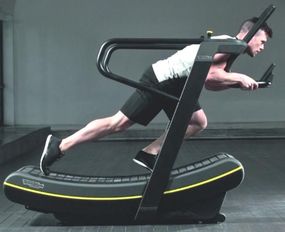A - Thanks for the question. Obviously, the image above gives away part of my answer...
Elliptical Design Considerations
You didn’t tell me the type of elliptical you have and as I’m sure you’re aware, there’s quite an array of model designs (e.g., elliptical trainer, elliptical glider and elliptical cross trainer) which result in different stride ranges and knee angles.
And they may or may not have moving arm bars.
My personal design preference, is one like the Life Fitness 93x (image below – and no I’m not sponsored). I find it simulates the feeling of running on the flat in terms of the stride length and a relatively low arc. For the most part, I don't use the movable arm bars so as to put greater effort on the legs.
And you can use your hamstrings to pull the foot platform back in a similar fashion to running rather than just focusing on the downward push. After all, when running you are basically pawing the ground behind you while at the same time applying a downward force.
However, the models that do produce much greater knee angles can be used to more effectively target the muscles used for uphill running.
As for treadmills, basic designs are not as variable, as the majority of models at fitness facilities, simply offer controls for varying slope and speed.
While it’s relatively common in clubs to find a high-end treadmill with an incline option, rarely will you find a model that simulates both uphill and downhill running. But they do exist and can offer 10 to 15 percent uphill and 2 to 3 percent downhill slopes. HERE’s a link to a Youtube video showing a treadmill that offers such inclines.
The decline option would certainly be of benefit for those training for downhill courses like the Revel, or St. George, or Boston marathons (see HERE for more on downhill running.)
And more recently, some high-end clubs have added futuristic-looking curved sled treadmills as an additional way to beat yourself up in some high end clubs.
Anyway, let’s check out what those dogged exercise physiologists have observed in two studies.
Click >> HERE to continue reading the answer.
___________________________________



 RSS Feed
RSS Feed
